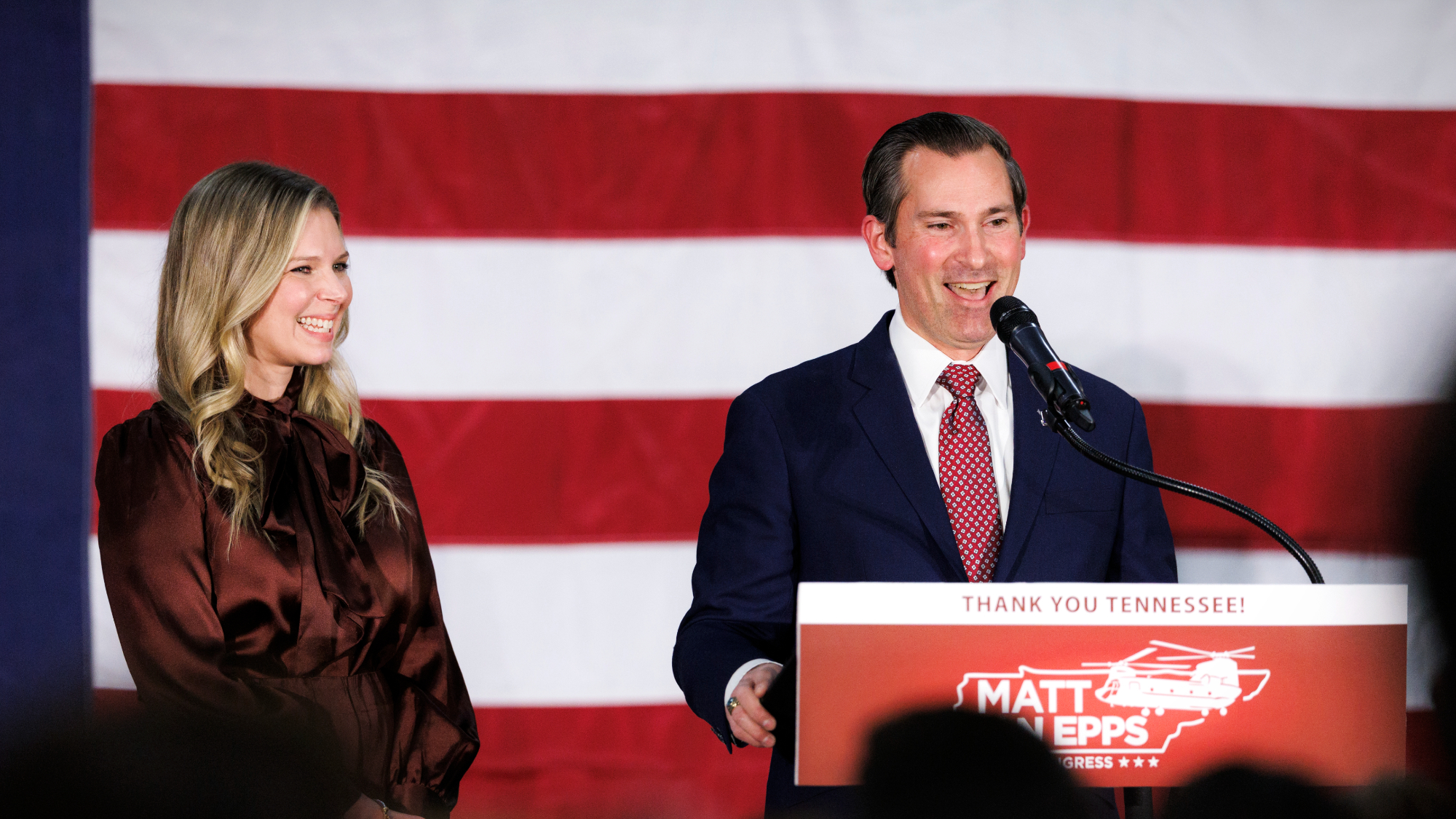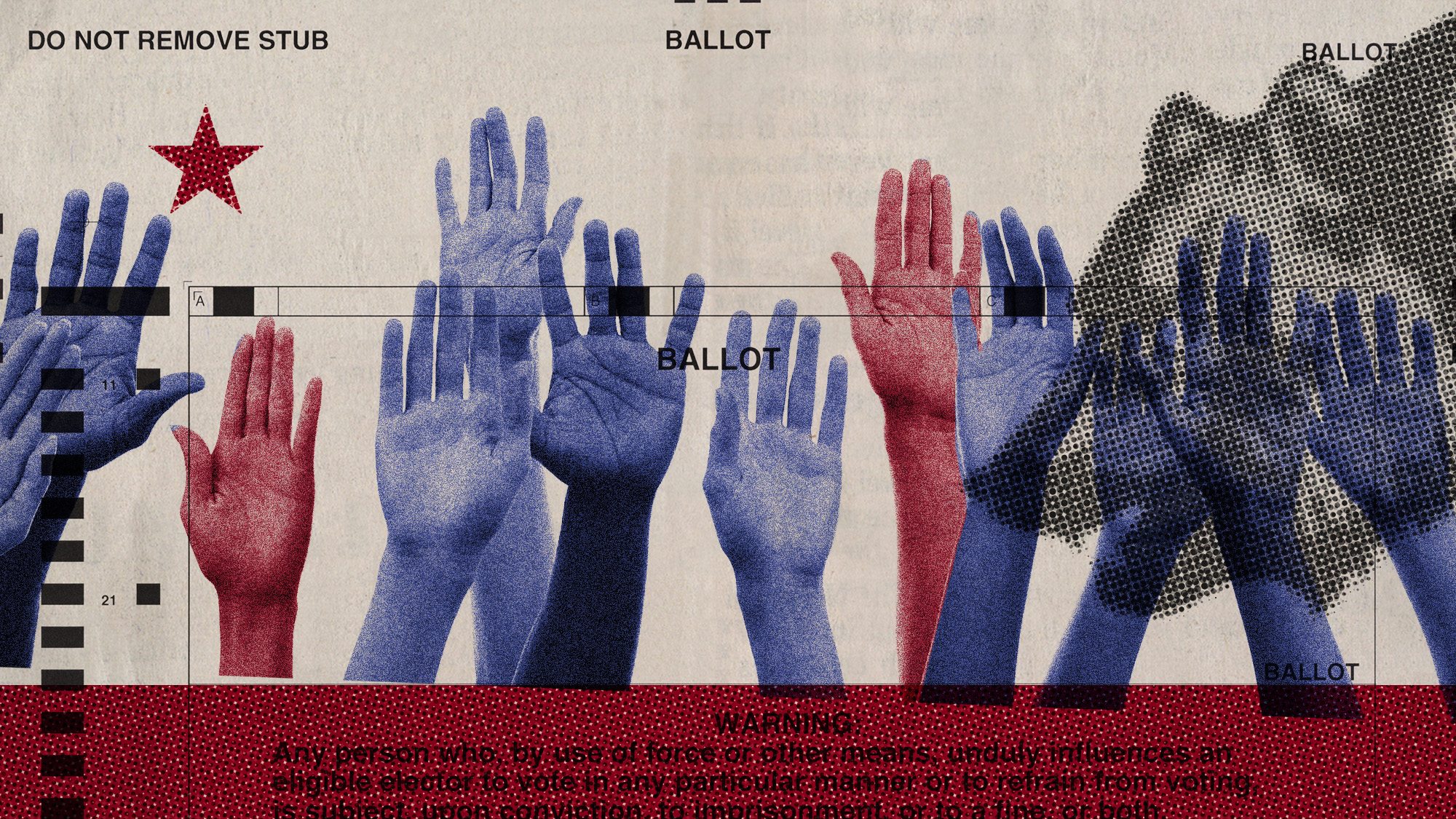Can the Democrats ever win the Senate?
Things aren't going to get any easier for the left in 2020 — or 2022


Democrats had a lot to celebrate on Tuesday. First and foremost, they recaptured the House, and in so doing defeated a number of incumbents in Trump country, from New York's 11th Congressional District to Oklahoma's 5th. They won a number of important gubernatorial contests, particularly in Midwestern states like Illinois, Michigan, and Wisconsin, and even deep-red Kansas. And they continued the crucial process of rebuilding the party at the local level, winning control of several state legislative chambers.
Democrats didn't win everything they hoped or expected; they lost the Florida, Ohio, and Iowa gubernatorial elections, for example. But you can't win 'em all, especially in a time of notable prosperity. And even the darkest spot on the Democrats' 2018 record, the loss of multiple Senate seats, can be excused on the grounds of an extremely difficult map.
But they shouldn't accept that excuse. The map this year was indeed terrible for Democrats, putting them overwhelmingly on the defensive, and largely in Trump country. But that is just another way of saying that the party has an uphill climb to retake the Senate at all.
The Week
Escape your echo chamber. Get the facts behind the news, plus analysis from multiple perspectives.

Sign up for The Week's Free Newsletters
From our morning news briefing to a weekly Good News Newsletter, get the best of The Week delivered directly to your inbox.
From our morning news briefing to a weekly Good News Newsletter, get the best of The Week delivered directly to your inbox.
Consider: Democrats are the opposition party to a profoundly unpopular Congress and president, and they won the national popular vote for the House by at least 7 points. Prosperity might protect popular Republican incumbents, and so limit their chances for gains, but Democratic incumbents at least should do much better than not — which they did, overwhelmingly in the House. But in the Senate, Democratic incumbents lost in Indiana, Missouri, and North Dakota, and they may yet lose Florida and Montana. Democrats fell short in a competitive open seat contest in Tennessee and may yet lose Arizona. And they lost in Texas to the most disliked man in the Senate. They only overcame in Nevada.
Compare that record with 2006, when Democratic incumbents won in Nebraska and North Dakota by overwhelming margins, and no Democratic incumbents lost. Or in 2008, when Democratic incumbents won in Louisiana and Arkansas, both states that Barack Obama lost — and lost by a larger relative margin than John Kerry did. No Democratic incumbents lost that year either.
Of course, the Democrats did defend a lot of blue and purple territory successfully this year. And in 2020 the map won't put Democrats in such a difficult position. But while the 2020 map will certainly put the GOP on the defensive, with 21 seats to the Democrats' 12 (assuming the GOP wins the Mississippi runoff), look where those seats are:
Republicans: Alaska, Arkansas, Colorado, Georgia, Idaho, Iowa, Kansas, Kentucky, Louisiana, Maine, Mississippi, Montana, Nebraska, North Carolina, Oklahoma, South Carolina, South Dakota, Tennessee, Texas, West Virginia, Wyoming.
A free daily email with the biggest news stories of the day – and the best features from TheWeek.com
Democrats: Alabama, Delaware, Illinois, Massachusetts, Michigan, Minnesota, New Hampshire, New Jersey, New Mexico, Oregon, Rhode Island, Virginia.
There's only one blue-state Republican on the ballot — Susan Collins in Maine — and Arizona will have a special election that, like this year, will be an opportunity for either party. But the Democrats will also start out assuming they'll more likely than not to lose Alabama, almost regardless of what Doug Jones' record turns out to be. They have the opportunity to play offense, but they'll be playing largely in purple-to-red territory: places like Colorado, Iowa, and North Carolina. And the incumbents there don't look distinctly vulnerable at the moment.
The 2022 elections look more promising at first glance. Once again, there are 21 Republicans and 12 Democrats, plus whoever wins the Arizona special election in 2020:
Republicans: Alabama, Alaska, Arkansas, Florida, Georgia, Idaho, Indiana, Iowa, Kansas, Kentucky, Louisiana, Missouri, North Carolina, North Dakota, Ohio, Oklahoma, Pennsylvania, South Carolina, South Dakota, Utah, Wisconsin.
Democrats: California, Colorado, Connecticut, Hawaii, Illinois, Maryland, Nevada, New Hampshire, New York, Oregon, Vermont, Washington.
The Democrats should certainly be excited to play offense — and they've got a broader field of purple states on which to attack: Florida, Iowa, Ohio, Pennsylvania, Wisconsin. But note that even in this much more favorable map, there are zero blue state Republicans — nobody equivalent to Heidi Heitkamp, Claire McCaskill, Jon Tester, or Joe Donnelly that the Republicans were able to target this year. The Democrats will have lots of territory on which to fight — but as in 2016, it's territory where either party can win.
That is the fundamental asymmetry. It's not that there are no small blue states — Vermont, Delaware, Hawaii, and Rhode Island are all pretty tiny. It's that there are so many more really red states than really blue ones, including a lot of mid-sized ones: Indiana and Tennessee and Missouri and Oklahoma and Louisiana and South Carolina and so on.
Where does this asymmetry come from? The deep division in our politics is partly regional. But it's increasingly not just between North and South, or between the coasts and the interior, but between urban and rural areas. Democratic victories in Trump country this year were predominantly in urban and dense suburban areas, and they did better in districts that went for Romney and then Clinton than in districts that went for Obama and then Trump. And Democratic victories in state legislatures reflected our deep divisions as well. While the Democrats flipped six legislative chambers, and won unified control of 14 states (up from eight pre-election), this relatively modest shift in historic terms actually increased polarization: After the election, Republicans still controlled 30 legislatures, down from 31, and only one state — Minnesota — has a legislature with each chamber controlled by a different party, the first time that has happened since 1914.
This is the so-called "Big Sort" by which America has divided into ideological tribes defined by demography and geography. Urban and suburban educated areas increasingly vote for Democrats, along with poorer rural and urban areas that are predominantly non-white; meanwhile, more rural and more working-class white areas overwhelmingly vote Republican. This division, like any deep division based on identity, poses a problem for democracy, because it makes elections less a referendum on the performance of the incumbent party or individual, and more a contest to see which tribe can more effectively muscle their members to the polls. But it's a particular problem for the Democratic Party given the nature of the Senate, which strongly overweights rural areas.
The Democrats can build a Senate majority by dominating in purple states — and they may do precisely that in 2020 or 2022, if economic and political conditions are right. But, precisely because they are purple, that leaves them vulnerable to rapid reverses whenever the electorate turns against the incumbent party. By contrast, if Republicans can dominate the long list of red states, they can build a majority merely by splitting the purple states. That's why the Republican strategy of maximizing negative partisanship is capable of winning (though it certainly isn't guaranteed to do so), while there is no equivalent mechanism for Democrats.
To level the playing field, the Democrats need to attack the Big Sort head on, and build a real rural constituency and a real red-state wing. That doesn't necessarily mean copy-catting Republicans. There's ample evidence that big parts of the Democratic agenda are popular in the reddest precincts. Medicaid expansion passed this year in Nebraska. A supermajority of Floridians voted to restore felons' voting rights. And multiple instances of ticket-splitting this year, from Iowa to Ohio to Kansas, demonstrate that it isn't all about mobilizing committed members of the base — that voters are still persuadable.
But they still need to be persuaded. Even if it means a caucus that is more cacophonous, I'd bet the Democrats would happily accept it and call it sweet music. But they haven't yet quite figured out the tune that will play in areas where Trump's noxious noise is greeted with cheers.
Noah Millman is a screenwriter and filmmaker, a political columnist and a critic. From 2012 through 2017 he was a senior editor and featured blogger at The American Conservative. His work has also appeared in The New York Times Book Review, Politico, USA Today, The New Republic, The Weekly Standard, Foreign Policy, Modern Age, First Things, and the Jewish Review of Books, among other publications. Noah lives in Brooklyn with his wife and son.
-
 Is MAGA melting down?
Is MAGA melting down?Today's Big Question Candace Owens, Tucker Carlson, Laura Loomer and more are feuding
-
 Kushner drops Trump hotel project in Serbia
Kushner drops Trump hotel project in SerbiaSpeed Read Affinity Partners pulled out of a deal to finance a Trump-branded development in Belgrade
-
 Son arrested over killing of Rob and Michele Reiner
Son arrested over killing of Rob and Michele ReinerSpeed Read Nick, the 32-year-old son of Hollywood director Rob Reiner, has been booked for the murder of his parents
-
 Democrat files to impeach RFK Jr.
Democrat files to impeach RFK Jr.Speed Read Rep. Haley Stevens filed articles of impeachment against Health and Human Services Secretary Robert F. Kennedy Jr.
-
 Miami elects first Democratic mayor in 28 years
Miami elects first Democratic mayor in 28 yearsSpeed Read Eileen Higgins, Miami’s first woman mayor, focused on affordability and Trump’s immigration crackdown in her campaign
-
 GOP wins tight House race in red Tennessee district
GOP wins tight House race in red Tennessee districtSpeed Read Republicans maintained their advantage in the House
-
 US government shutdown: why the Democrats ‘caved’
US government shutdown: why the Democrats ‘caved’In the Spotlight The recent stalemate in Congress could soon be ‘overshadowed by more enduring public perceptions’
-
 A crowded field of Democrats is filling up the California governor’s race
A crowded field of Democrats is filling up the California governor’s raceIn the Spotlight Over a dozen Democrats have declared their candidacy
-
 Will Chuck Schumer keep his job?
Will Chuck Schumer keep his job?Today's Big Question Democrats are discontented and pointing a finger at the Senate leader
-
 Democrats split as Senate votes to end shutdown
Democrats split as Senate votes to end shutdownSpeed Read The proposed deal does not extend Affordable Care Act subsidies, the Democrats’ main demand
-
 Democrats seek 2026 inspiration from special election routs
Democrats seek 2026 inspiration from special election routsIN THE SPOTLIGHT High-profile wins are helping a party demoralized by Trump’s reelection regain momentum
